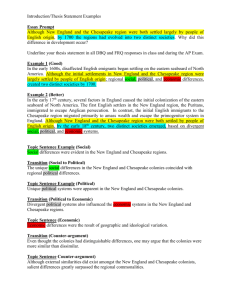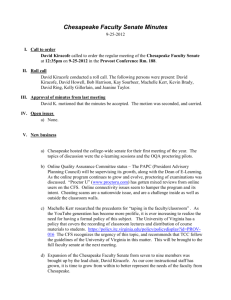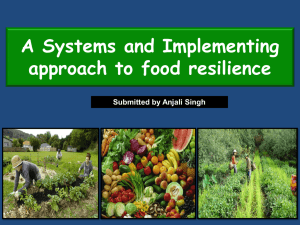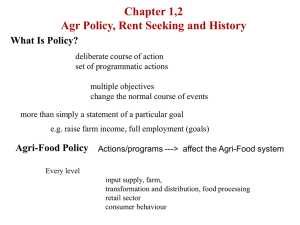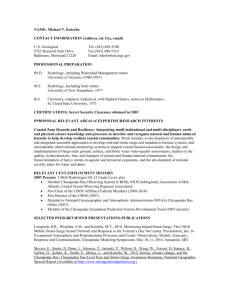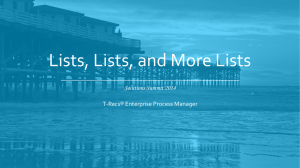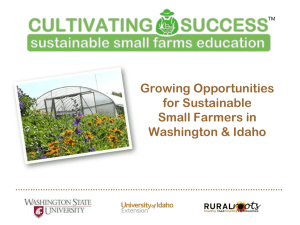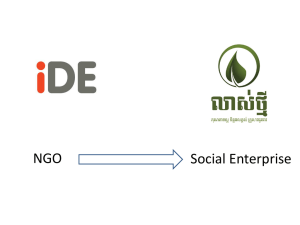Welcome to the Durham Farm and Food Network
advertisement
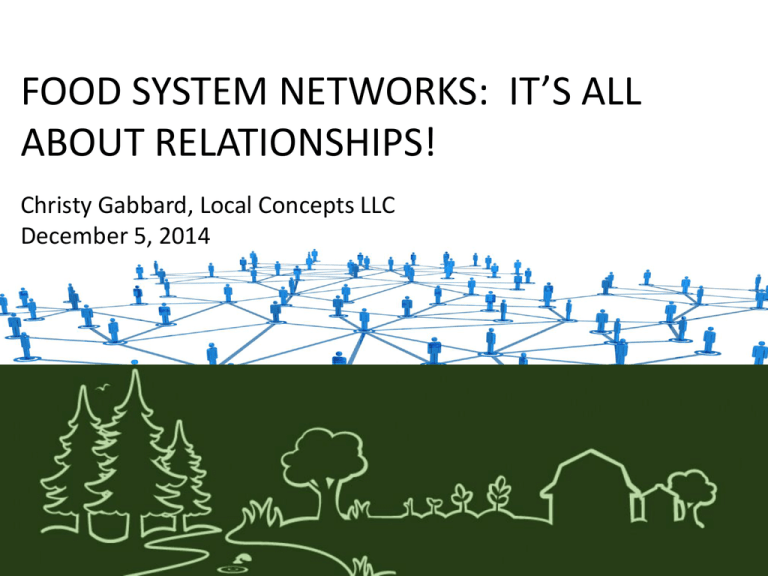
FOOD SYSTEM NETWORKS: IT’S ALL ABOUT RELATIONSHIPS! Christy Gabbard, Local Concepts LLC December 5, 2014 Christy Shi Day Community Food Systems Engagement Strategist Jared Cates Community Mobilizer w w w.community foodst rateg ies. org Overview When network works Purpose of a network Example of a network in development Steps to create a network Food System Conversations Have Quickly Evolved Farmers Markets CSAs 2000 Farm to Restaurant Food Hubs Farm to Institution Processing Centers 2014 The way in which we feed ourselves represents a complex system. Producing Disposing Delivering Financial Social/ Cultural Food System Elements & Pressures Consuming Political Purchasing Processing Marketing Adapted from Cornell’s “Discovering the Food System” curriculum. Contextual/ Environmental A system, by definition, involves complexity and many, many connections. There are many diverse food system stakeholders. Elected Officials Chambers of Commerce Restaurant Associations Museums and Historical Associations Farm Service Agency Marketing Groups Soil and Water Conservation Land Trusts Health Practitioners Hardware, Feed & Seed Stores Higher Education Distributors Parks and Recreation Community Gardens Community Foundations Hospitals Cooperative Extension Food Bloggers & Writers Local Farm & Food Orgs Youth Organizations Grocery/Convenience Stores Farm Bureau Educators (K-12) Economic Development Nature Groups Culinary Schools Social Services Watershed Groups Media Tourism People with Networks Environment/Sustainability Offices Faith-Based Organizations Dealer/Packers/Processors Farmers Markets Food Hubs/Aggregators Food Banks Public Health Local Government Community College Planning & Code Enforcement Banks & Funding Agencies Civic Clubs and Organizations Small Business Centers Future Farmers of America Natural Resource Conservation Service School System Nutritionists Waste Management We often have a limited view of the system. Blind Men and the Elephant By John Godfrey Saxe (1816–1887) Solutions are often unknown, because the causes are complex. loss of farmland poverty aging farmers poor diet choices Our default approaches are heavily influenced by hierarchical concepts. Network approaches are better suited to address the structure of complexity. A network approach is useful when… 1) The Problem Or Opportunity is Big 2) You Need New Ideas 3) The Solution Is Not Clear 4) You Need Diverse Engagement Adopted from the Network Weaver Handbook by June Holley (2012) Essential elements of a network approach… 1) Encourage Sharing 2) Encourage Inclusion 3) Encourage Experimentation & Reflection Adopted from the Network Weaver Handbook by June Holley (2012) Action Transformative Alignment Transitional Connection Time Transactional Chesapeake Foodshed Network Example CFN Development 2012-2015 2012 2014 2015 Conceived of the idea Determined a need an interest in establishing a network Received funding Hired a network coordinator Took the pulse of the leadership group Established a communication strategy for the Leadership Committee and Network Behavior Network learning – presentation, webinars, panel discussions Establish a Strategic Planning Committee Leadership Committee Retreat to get agreement on network purpose, priorities, frame work, and action items Work on action items: Network Event Broaden participation Chesapeake Foodshed Network Vision A Sustainable, Resilient and Inclusive Regional Food System that Supports Strong Communities and a Healthy Bay. Mission Catalyze connections and collaboration in the Chesapeake Bay Watershed to enhance and build a sustainable, resilient and inclusive regional food system. Chesapeake Foodshed Network Work Groups General Network Building: •Steering Committee •Strategic Planning Work Group Food Access Environmental Health Production & Processing Land Conservation & Access Job Creation Aggregation & Distribution Steering Committee & Coordinator Disposal & Recovery Consumption Policy & Regulations Energy Marketing & Education Purchasing Finance Transportation Production Aggregation Policy Marketing Production Production Policy Production Distribution Aggregation Marketing Chesapeake Foodshed Network is a dynamic place of relationships, learning, and action. Apply a network approach by… Developing Relationships • Add formal networking time to each meeting • Co-opt an existing gathering to network • Expand the types of voices in your group Apply a network approach by…Building Structural Support • Use CFSA or other listservs to share information on a regular basis • Encourage identification and sharing of resources, such as skills, money, space, and equipment. Apply a network approach by… Acting as a Network Weaver • LEARN about the interests and needs of individuals and groups in your community. • LOOK for opportunities to connect needs and haves. • SHARE information, helping people connect with one another directly. How a Network Can Add Value Strength in numbers Quicker learning curve Encouragement to continue Continuing professional development More collaboration than competition Taking different perspectives given the complexity of the system Each of us taking a piece that can blend into solutions Increasing knowledge of valuable resources Telling and sharing the story; ensuring the story travels Conversations about how we evaluate success and we look at evaluation together Mindset shift that we each have a piece of the answer Resources Blogs: http://interactioninstitute.org/author/curtis/ Books: •Network Weaver Handbook – June Holley •Networks that Work – Paul Vandeventer Networks http://www.reamp.org/ http://www.vtfoodatlas.com/network www.foodsolutionsne.org/ www.rifoodcouncil.org Christy Gabbard, Local Concepts LLC Chesapeake Foodshed Network Christine.gabbard@gmail.com 540-558-8010
